Introduction
Generating leads is the lifeblood of any successful digital marketing strategy. Whether you’re a startup or an established brand, attracting potential customers is essential for growth. But with the digital space more competitive than ever, how do you stand out and capture high-quality leads? In the following sections, we’ll explore powerful strategies to help you drive targeted traffic, engage prospects, and convert them into loyal customers
Audience Segmentation: The Key to Effective Digital Marketing
Not all leads are created equal. To maximize your digital marketing efforts, you need to target the right audience, that is, the people most likely to engage with your brand and convert into customers. That’s where audience segmentation comes in. By dividing your audience into specific groups based on their demographics, behavior, interests, or buying stage, you can create highly personalized marketing campaigns that drive better results.
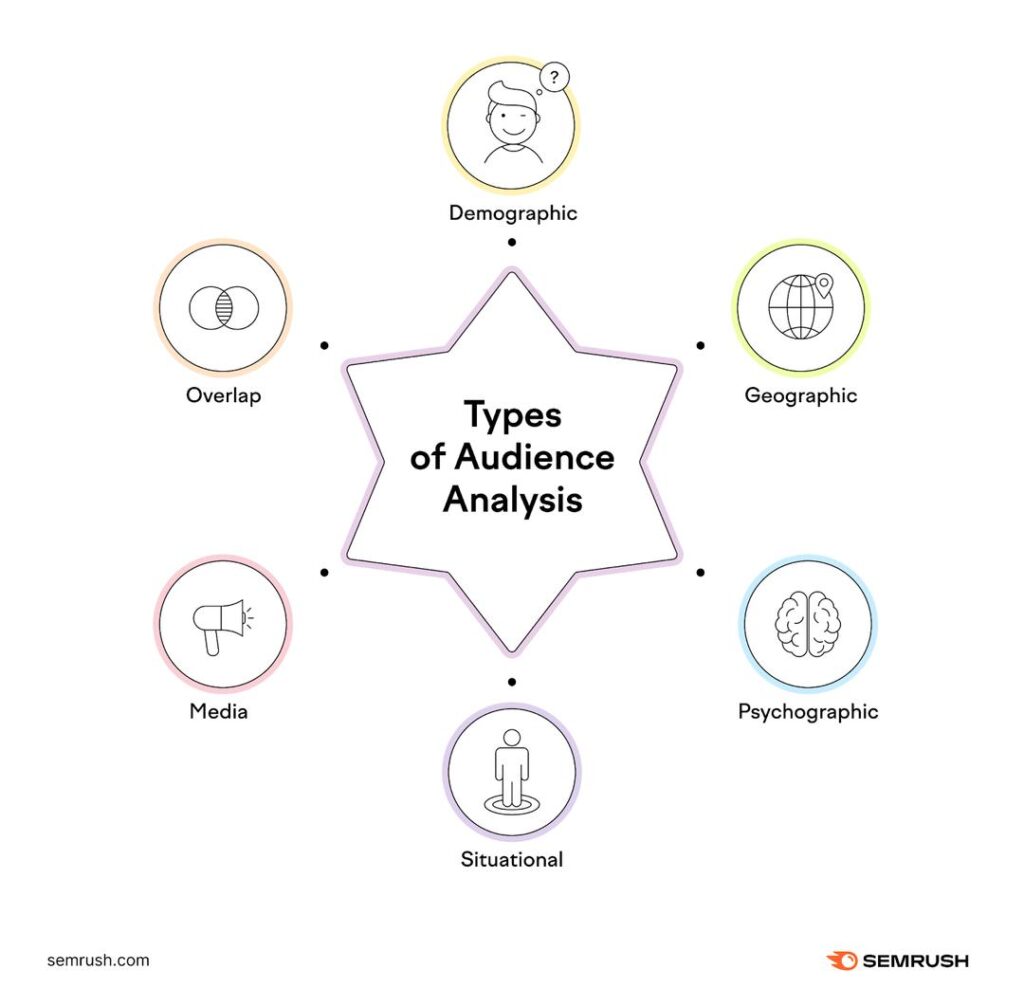
Why Understanding Your Target Audience Matters
Marketers often struggle because they treat their entire audience as a homogeneous group, leading to generic and ineffective campaigns. Audience segmentation changes this dynamic by allowing you to craft personalized messages that speak directly to each subgroup. Whether it’s demographics, interests, behaviors, or preferences, understanding who you’re addressing enables you to create content that truly connects.
For example, consider a software company targeting small business owners versus large corporations. Small business owners might prioritize cost-effectiveness and ease of use, while larger enterprises focus on scalability and comprehensive features. A one-size-fits-all approach would fail to address either group effectively, but segmentation allows you to tailor your messaging to each audience’s specific needs.
Common Mistakes in Audience Targeting
Despite its importance, many marketers make avoidable errors when it comes to audience segmentation. One common pitfall is assuming uniformity across all segments. For instance, age groups may have differing priorities; a teenager might prioritize style over functionality, whereas an adult might focus more on durability. Neglecting these differences can lead to mismatched messaging and wasted opportunities.
Another mistake is overlooking behavioral factors. How people interact with your brand online varies widely. Some may prefer video content, while others might favor written tutorials. Ignoring these preferences can result in low engagement and missed conversion opportunities.
Best Practices for Effective Audience Segmentation
To harness the full potential of audience segmentation, adopt these best practices:
Demographic Data: Begin with basic information like age, gender, and location. These factors often influence purchasing behavior and consumption patterns.
Psychographic Data: Dive deeper into personality traits, lifestyle, and values. This helps in crafting messages that resonate emotionally with your audience.
Behavioral Data: Analyze how individuals interact with your brand. Consider their purchase history, preferred platforms, and content consumption habits.
Technographics: Understand the devices and technologies your audience uses. This is crucial for optimizing your digital presence across various screens and platforms.
Continuous Monitoring: Keep track of evolving audience needs and adjust your segments accordingly. Market trends and customer feedback can reveal new insights over time.
Real-Life Examples: Consider companies like Peloton, which segments its audience into gym members, home workout enthusiasts, and casual exercisers, each receiving tailored marketing strategies.
By implementing these practices, you can create targeted campaigns that drive engagement and conversions, ensuring your marketing efforts are as effective as possible.
Audience segmentation allows you to deliver the right message to the right people at the right time. Instead of using a one-size-fits-all approach, you can personalize your marketing, improve engagement, and increase conversion rates. Now that you know how to segment your audience, let’s explore how crafting compelling content can help you generate more leads.
Content Strategy: Crafting Compelling Content for Lead Generation
Content marketing isn’t just about creating blog posts; it’s about delivering valuable information that attracts, educates, and nurtures potential customers. A strategic content approach can position your brand as an industry leader while generating high-intent leads. Let’s explore how to develop a robust content strategy that drives results.
Aligning Content with Audience Needs and Goals
The core of an effective content strategy lies in the alignment between content and audience needs. Content should address the pain points, answer questions, and cater to the interests of your target segments. For instance, if your audience consists of small business owners, content could focus on cost-effective solutions and scalability, unlike content aimed at large corporations. This alignment ensures that your message resonates deeply, fostering trust and engagement.
Types of High-Performing Content
To capture attention and drive action, employ a variety of content formats that resonate with your audience:
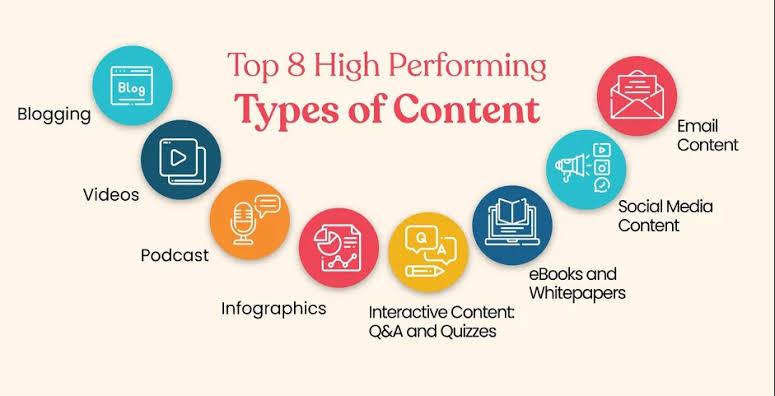
– Blog Posts: Informative articles that provide value, such as “Top Tools for [Industry] Success.”
– Videos: Visual content that demonstrates products or shares success stories.
– Infographics: Simplify complex information, making it easy to digest.
– Case Studies: Showcasing real-world successes that mirror your audience’s challenges.
– Webinars and Workshops: Interactive events where experts discuss relevant topics.
Each format has its place in the marketing funnel, from awareness to conversion.
Keeping Content Fresh and Relevant
Maintaining relevance is crucial. Use tools like Google Keyword Planner and SEMrush for keyword research to identify trending topics. Leverage analytics tools such as Google Analytics and HubSpot to track content performance and adjust strategies accordingly. Regular updates and refreshes ensure that content remains timely and engaging.
Personalizing Content Through Segmentation
Tailor content to specific audience segments using demographic, psychographic, behavioral, and technographic data. For example, offer different landing pages based on a visitor’s industry or browsing history. Personalized content enhances engagement and conversion rates, as it speaks directly to individual needs.
Incorporating Effective Calls-to-Action (CTAs)
CTAs guide users toward desired actions, such as downloading resources or subscribing to newsletters. Place CTAs strategically within content, ensuring they are clear and compelling. Test different CTAs using A/B testing to determine what resonates best with your audience.
Continuous Optimization and Evolution
Content isn’t static; it evolves based on performance data and audience feedback. Monitor metrics, conduct A/B testing, and refine content to maximize effectiveness. This iterative process ensures that content remains impactful and aligned with changing audience demands.
By integrating these elements into your content strategy, you create a cohesive, engaging experience that drives leads and fosters lasting connections with your audience.
Conversion Optimization: Turning Visitors into Leads
Conversion optimization is the linchpin of any successful digital marketing campaign. While attracting visitors through targeted strategies is crucial, converting them into leads or customers requires a strategic approach that goes beyond mere aesthetics. Here’s how you can optimize your conversion process to drive significant results:
Key Elements of a High-Converting Landing Page
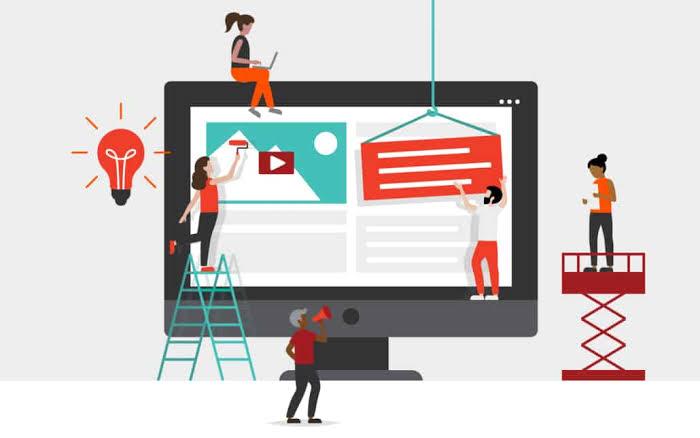
Clear Value Proposition: Begin with a compelling headline that immediately communicates the value of your offer. Visitors should instantly understand the benefit of taking action, whether it’s downloading a resource, signing up for a trial, or making a purchase.
Clean Design and Layout: A cluttered page can confuse and frustrate visitors. Keep your design simple, focusing on a clean layout that guides the eye naturally towards your call to action (CTA).
Trust-Building Elements: Incorporate visual cues like SSL certificates, trust badges, and secure payment icons to reassure visitors of your site’s security and reliability. Display customer testimonials and case studies to build credibility.
Mobile-Friendly Experience: Ensure your landing page is fully responsive, as mobile users account for a significant portion of online traffic. A poor mobile experience can drive visitors away.
Fast Loading Times: Slow-loading websites can increase bounce rates. Optimize images, leverage browser caching, and minimize code bloat to ensure quick load times.
Persuasive Copywriting
Engaging Headlines: Craft headlines that spark curiosity or highlight the solution to a problem. For example, “Discover How [Company Name] Grew Revenue by 200%” invites readers to learn more.
Scarcity and Urgency: Use limited-time offers or countdown timers to encourage immediate action. For instance, “Limited Spots Available—Sign Up Today!”
Social Proof: Include testimonials, reviews, or statistics to demonstrate the effectiveness of your product or service. This builds trust and reassures visitors of their decision.
Compelling CTAs: Ensure your CTA buttons stand out with contrasting colors and clear text. Use action verbs like “Get Started,” “Download Now,” or “Claim Your Offer.”
Beyond the Landing Page: Optimizing the Entire Website Experience
Intuitive Navigation: Create a seamless navigation experience that allows visitors to easily find the information or offers they’re seeking. Use internal links to guide them toward conversion opportunities.
Consistent Branding: Maintain a unified brand presence across all pages to reinforce recognition and trust.
Personalization: Tailor content and recommendations based on visitor behavior, demographics, or past interactions to meet individual needs.
Retargeting and Nurturing
Retargeting Ads: Retarget visitors who showed interest but didn’t convert. Display ads featuring personalized messages can remind them of the offer.
Nurturing Campaigns: Follow up with leads who didn’t convert with educational emails or personalized content to keep them engaged over time.
Data-Driven Insights
Track Metrics: Use analytics tools to monitor bounce rates, conversion rates, and click-through rates (CTR). Identify bottlenecks in your funnel and areas needing improvement.
Continuous Testing: Conduct A/B testing on everything from headlines to CTAs to determine what resonates best with your audience. Iterate and refine based on data.
Leverage Multi-Channel Approaches
Integrated Strategy: Combine SEO, content marketing, and social media to create a cohesive ecosystem that drives traffic and encourages conversions.
Cross-Platform Consistency: Ensure your messaging and CTAs are consistent across all channels to maintain a strong, unified brand presence.
By implementing these strategies, you can significantly improve your conversion rates and drive more leads. Remember, conversion optimization is an ongoing process that requires testing, learning, and adapting to stay ahead of the competition.
Social Proof and Trust Building: The Impact on Lead Generation
People trust real experiences more than marketing claims. That’s why social proof is one of the most powerful tools in digital marketing. When potential customers see others vouching for your brand through reviews, testimonials, case studies, or influencer endorsements, they’re far more likely to trust and buy from you.
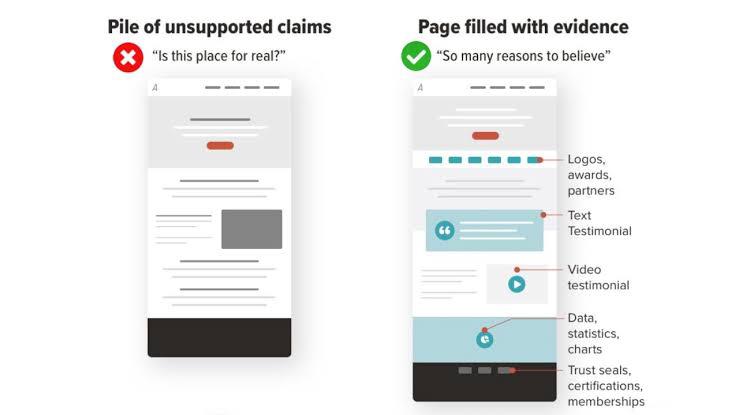
The Power of Social Proof in Lead Generation
Social proof comes in many forms, including testimonials, reviews, case studies, and user-generated content. These elements work by reassuring visitors that they are making the right choice, reducing hesitation, and encouraging them to take action. For instance, seeing a testimonial from a satisfied customer can alleviate concerns and boost confidence in a product or service.
Studies have shown that consumers trust peer recommendations more than advertising. This makes social proof an invaluable tool for digital marketers. For example, a positive review on Google can significantly influence a potential customer’s decision to visit a local business or consider a specific product.
Strategies to Incorporate Social Proof and Build Trust
To harness the power of social proof, businesses must actively gather and display testimonials and reviews. Here are some effective strategies:
Collect Testimonials: Businesses can request feedback directly from customers through surveys, email follow-ups, or in-person interactions. Displaying these testimonials prominently on the website, particularly on landing pages and service pages, can reinforce trust.
Encourage User-Generated Content: Running contests or promotions where customers share their experiences with a product or service can yield valuable content. Featuring the best submissions on the company’s website or social media channels can showcase real-world successes.
Showcase Third-Party Validation: Displaying certifications, awards, or partnerships with recognized organizations can signal professionalism and expertise. For example, a Google Partner certification can reassure potential clients of the company’s proficiency in digital marketing.
Highlight Case Studies and Success Stories: Sharing detailed case studies demonstrates tangible results, making it easier for prospects to visualize the value of working with the company. These stories often include before-and-after scenarios that illustrate the effectiveness of the services offered.
Manage Online Reputation: Consistently update and respond to reviews across various platforms like Google My Business, Yelp, and social media. Engaging with feedback shows commitment to customer satisfaction and enhances trustworthiness.
Use Visuals Effectively: Including photos of happy customers, team members, or product usage can make content more relatable and trustworthy. Visuals break down barriers and help visitors connect emotionally with the brand.
Leverage Third-Party Platforms: Utilize platforms like Trustpilot or Better Business Bureau (BBB) to display ratings and reviews. These platforms are trusted by many consumers, adding an extra layer of credibility.
By consistently incorporating social proof into their digital marketing efforts, businesses can create a compelling narrative that resonates with their audience. This, in turn, fosters trust and increases the likelihood of visitors converting into leads.
Consistency in Trust Building
Maintaining a consistent presence across all platforms is crucial. Ensuring that social media profiles, websites, and other platforms reflect the same positive image helps in building a reliable brand reputation. Responding to feedback and reviews promptly demonstrates a commitment to customer service, further enhancing trust.
Trust is the foundation of any successful business, and social proof helps you build it authentically. By leveraging customer testimonials, real-world success stories, and public endorsements, you can turn hesitant prospects into loyal customers. Up next, let’s explore how search engine optimization (SEO) plays a key role in driving organic traffic and ultimately generating leads
Search Engine Optimization (SEO): The Foundation for Driving Organic Traffic and Leads
If your ideal customers can’t find you online, they can’t become leads. That’s where Search Engine Optimization (SEO) comes in. A well-optimized website attracts organic traffic, builds brand credibility, and helps convert visitors into paying customers without relying on paid ads. By mastering SEO, you ensure your business ranks higher on search engines and stays ahead of the competition

The Importance of SEO in Digital Marketing
SEO is crucial because it ensures your website ranks higher on search engine results pages (SERPs), making your content visible to potential customers seeking solutions. Unlike paid ads, which can be expensive, SEO drives free, targeted traffic, complementing your paid efforts and expanding your reach. Moreover, a high search engine ranking reflects trust and authority, influencing users to trust your brand and its offerings.
The Basics of SEO for Digital Marketers
To leverage SEO effectively, focus on two main areas: on-page and off-page SEO.
On-Page SEO:
– Title Tags: Craft concise, keyword-rich titles that encapsulate your content’s essence. Ensure each title is unique for every page.
– Meta Descriptions: Write compelling summaries that entice users to click, incorporating primary keywords.
– Headers (H1, H2, etc.): Use headers to structure content, making it easier for search engines to understand your content’s hierarchy.
– Content Quality: Create informative, engaging content that addresses audience queries fully. High-quality content attracts links and keeps users engaged.
– Internal Linking: Link to other relevant pages within your site to guide navigation and distribute link equity.
Off-Page SEO:
– Backlinks: Acquire high-quality backlinks from reputable sites to boost your domain’s authority. Engage in outreach, guest blogging, and collaborate with industry leaders.
– Technical SEO: Ensure your site is fast, mobile-friendly, and free from broken links. Technical health is a significant ranking factor.
For businesses targeting local customers, local SEO is vital. Optimize your Google My Business profile, acquire local citations, and ensure consistent Name, Address, and Phone Number (NAP) information across directories.
Also, integrate SEO with content marketing to create a robust strategy. High-quality, relevant content not only attracts links but also improves user engagement, enhancing your site’s overall performance.
Bear in mind to utilize tools like Ahrefs, SEMrush, or Moz to conduct keyword research, analyze competitors, and track your progress. These tools provide insights that guide your SEO adjustments.
SEO isn’t just about ranking higher; it’s about driving the right traffic that converts. By optimizing your website, content, and search visibility, you can attract, engage, and convert leads consistently. When combined with content marketing and social proof, SEO becomes a powerful tool in generating leads, as it attracts an audience ready to engage with your offerings.
Call-to-Action (CTA) Optimization: Boosting Lead Generation Effectiveness
You’ve attracted the right audience, engaged them with valuable content, and built trust but without a strong Call to Action (CTA), your leads may never take the next step. A compelling CTA guides users toward conversion, whether it’s signing up for a newsletter, booking a consultation, or making a purchase

Crafting Effective CTA Messages
Clarity is Key: Your CTA should immediately convey the action you want the user to take. Avoid ambiguity; ensure the message is unambiguous. For example, instead of “Get Started,” specify “Sign Up Today.”
Relevance Matters: Tailor your CTA to the specific audience and their needs. If you’re targeting new visitors, a CTA like “Explore Our Products” might work well. For existing subscribers, “Upgrade Now” could be more effective.
Emotional Appeal: CTAs should evoke emotions that encourage action. Words like “Free,” “Now,” “Save,” and “Today” create urgency and can increase click-through rates.
Designing Visually Appealing CTAs
Visual appeal plays a significant role in CTA effectiveness. Here’s how to optimize:
Color Contrast: Use contrasting colors to make CTAs stand out. For example, a bright green button on a neutral background can draw attention.
Size and Placement: Position CTAs prominently, ensuring they’re easy to see. Larger buttons may perform better, especially if they’re above the fold.
Consistency: Maintain a uniform design across your site to build trust and reduce confusion.
Testing and Refining
– A/B Testing: Continuously test different CTAs to determine what resonates best with your audience. Compare metrics like click-through rates and conversion rates to identify top performers.
– Analyze Feedback: Pay attention to user comments and surveys. If users find a CTA confusing, consider revising it.
Personalization and Dynamic CTAs
Personalized CTAs can significantly boost conversions. Use data to tailor messages, such as addressing users by name or offering a discount based on their past behavior.
Timing and Context
– User Intent: Align CTAs with the user’s intent. If someone is searching for “best SEO tools,” a CTA like “Discover Top Tools Now” fits naturally.
– Device and Platform: Optimize CTAs for different devices and platforms. Mobile users may prefer smaller, easily- tapable buttons.
Avoiding Common Mistakes
– Overloading with Text: Keep CTAs concise. Avoid unnecessary words that can dilute the message.
– Lack of Action Verb: Use active verbs like “Start,” “Join,” or “Download” to encourage immediate action.
No Clear Outcome: Ensure the CTA clearly states the benefit. Users should know exactly what will happen when they click.
A well-crafted CTA is the difference between a passive visitor and an active lead. By making your CTAs clear, urgent, and benefit-driven, you’ll drive more conversions and maximize your marketing efforts. Now that you have a strong CTA strategy, let’s explore how tracking and analytics can help you optimize lead generation even further
Data Analytics and Performance Tracking: Driving Informed Decisions in Digital Marketing
Generating leads is just the beginning. Tracking and analyzing performance is what turns good strategies into great ones. Without data-driven insights, you’re guessing instead of optimizing. By using the right analytics tools, you can measure what’s working, identify weak points, and continuously improve your digital marketing efforts for better conversions
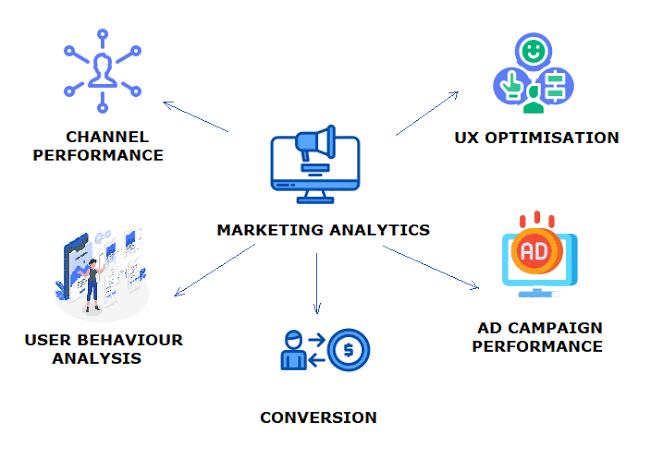
Performance Tracking: Monitoring Key Metrics
Performance tracking involves monitoring various metrics that gauge the success of digital marketing initiatives. Key metrics include Click-Through Rate (CTR), conversion rates, cost per lead, return on investment (ROI), and customer lifetime value. These metrics provide insights into how well campaigns are performing and highlight areas that may require adjustment. For instance, a low CTR indicates that an ad or CTA might not be resonating with the target audience.
Utilizing Tools and Techniques
To effectively track performance, marketers employ a range of tools and techniques. Google Analytics, SEMrush, HubSpot, and similar platforms offer robust features for tracking website traffic, user behavior, and conversion rates. Advanced techniques like A/B testing allow marketers to experiment with different versions of a webpage or CTA to determine which version yields better results. This iterative process ensures continuous improvement and optimization.
Key Metrics to Focus On
Focusing on the right metrics is crucial for assessing campaign performance. While quantitative metrics like CTR and conversion rates provide valuable insights, qualitative data such as customer feedback and testimonials also play a role. Together, these elements offer a comprehensive view of campaign effectiveness.
Continuous Improvement Through Data
Data analytics doesn’t stop at collection; it drives action. Marketers use data to refine strategies, optimize budgets, and enhance customer experiences. A/B testing is a prime example, allowing adjustments based on performance data to maximize conversions and engagement.
Integration with Overall Strategy
Effective data analytics is integral to the broader digital marketing strategy. It shouldn’t exist in isolation but rather complement other tactics like audience segmentation and content creation. By integrating data insights with strategic planning, marketers can create cohesive campaigns that resonate deeply with their audiences.
Avoiding Common Pitfalls
One common mistake is undertracking or overtracking, leading to information overload. Marketers must balance detail-oriented metrics with broader strategic goals. Additionally, relying solely on numerical data can overlook qualitative factors, such as customer sentiment, which are equally vital for campaign success.
In conclusion, data analytics and performance tracking are vital for driving informed decisions in digital marketing. By harnessing these tools, marketers can uncover valuable insights, refine strategies, and ultimately achieve their business objectives. Embracing data as a cornerstone of digital marketing ensures that campaigns are not only effective but also continuously evolving to meet the needs of the audience.
Automation in Multi-Channel Marketing: Maximizing Efficiency and Engagement
In today’s fast-paced digital world, businesses need more than just a presence across multiple platforms—they need a smart, automated strategy that ensures consistent engagement and seamless customer experiences. Automation in multi-channel marketing allows brands to streamline their efforts, deliver personalized messaging at scale, and maximize conversions with minimal manual effort. By leveraging automation tools, businesses can ensure that every touchpoint—from email campaigns to social media interactions—is optimized for engagement and efficiency
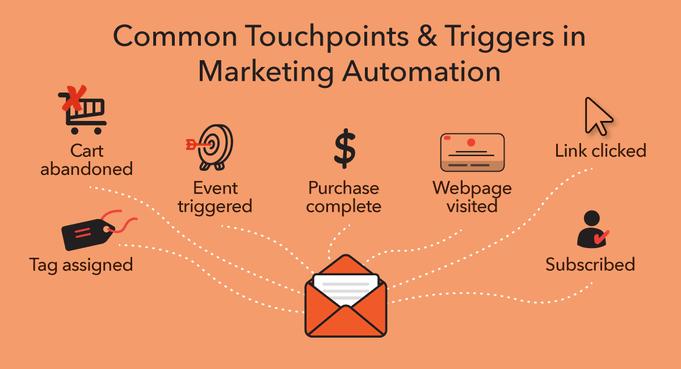
Why Automation is Essential in Multi-Channel Marketing
Scalability & Efficiency – Automation streamlines marketing efforts by scheduling and managing campaigns across multiple platforms, reducing manual work and increasing productivity.
Personalized Engagement – Automated workflows enable tailored messaging based on user behavior, ensuring that each interaction feels relevant and timely.
Consistent Brand Messaging – Automation tools ensure that messaging remains unified across social media, email, websites, and paid ads, reinforcing brand identity and credibility.
Optimized Lead Generation – From chatbots handling inquiries to automated email sequences nurturing leads, automation enhances the customer journey, driving conversions at scale.
Seamless Integration with Other Strategies – Automation complements SEO, content marketing, and paid advertising by ensuring that leads are captured, nurtured, and converted without gaps in communication.
Best Practices for Leveraging Automation in Multi-Channel Marketing
Automated Email Sequences – Set up drip campaigns that nurture leads with relevant content, offers, and follow-ups, increasing the chances of conversion.
AI-Powered Chatbots – Implement chatbots on your website and social media to provide instant responses, guiding potential customers through the decision-making process.
Social Media Scheduling & Engagement – Use automation tools like Hootsuite, Buffer, or Meta Business Suite to schedule posts, respond to comments, and analyze performance.
CRM & Lead Scoring Automation – Utilize Customer Relationship Management (CRM) systems to segment leads based on behavior and automate targeted marketing efforts accordingly.
Cross-Channel Retargeting – Automate ad retargeting campaigns on Google, Facebook, and LinkedIn to re-engage users who interacted with your brand but didn’t convert.
Real-Time Performance Tracking – Use analytics tools like Google Analytics, HubSpot, and marketing automation platforms to monitor campaign performance and optimize strategies dynamically.
Challenges of Automation & How to Overcome Them
Maintaining Human Touch – Automation should enhance personalization, not replace it. Combining AI-driven responses with human oversight ensures a balance between efficiency and genuine engagement.
Avoiding Message Redundancy – Over-automation can lead to repetitive messaging. Use segmentation to ensure each audience segment receives tailored content.
Managing Integration Across Channels – Ensure automation tools integrate seamlessly with your existing platforms (CRM, email marketing, social media, and website analytics) for a unified strategy.
Cost Management – Start with affordable automation tools and scale as needed, prioritizing high-ROI automation processes like lead nurturing and retargeting.
Integrating Automation with Your Overall Digital Marketing Strategy
For automation to be effective, it must align with your broader digital marketing goals. Rather than operating in isolation, automated multi-channel marketing should support audience segmentation, content distribution, and customer engagement in a structured and data-driven way.
Unified Campaign Execution – Ensure automated workflows guide customers seamlessly across different touchpoints, from social media interactions to email follow-ups.
Behavior-Based Triggers – Use automation to send targeted messages based on user actions, such as abandoned carts, repeated website visits, or previous purchases.
Data-Driven Decision Making – Leverage automation to collect insights on customer preferences, engagement rates, and conversion patterns, helping refine future marketing efforts.
Personalized Customer Journeys – Design automated, dynamic workflows that adjust based on customer behavior, ensuring that leads receive the right content at the right stage.
Automation isn’t just a convenience—it’s a game-changer for scaling multi-channel marketing efforts without losing personalization or consistency. By integrating automation into your strategy, you can nurture leads more effectively, improve customer engagement, and drive higher ROI while saving time and resources. The key is to balance automation with human touchpoints, ensuring that technology enhances customer relationships rather than replacing them. Embracing automation in multi-channel marketing ensures efficiency, consistency, and measurable success in today’s competitive digital landscape
Multi-Channel Marketing Approach: Maximizing Reach and Engagement in Digital Marketing
In today’s interconnected world, multi-channel marketing has emerged as a cornerstone of effective digital marketing strategies. By integrating various communication channels, businesses can create a cohesive brand presence that resonates with a broader audience. This approach isn’t just about reaching more people; it’s about doing so in a way that aligns with their preferences and behaviors, ultimately driving lead generation and fostering stronger connections.
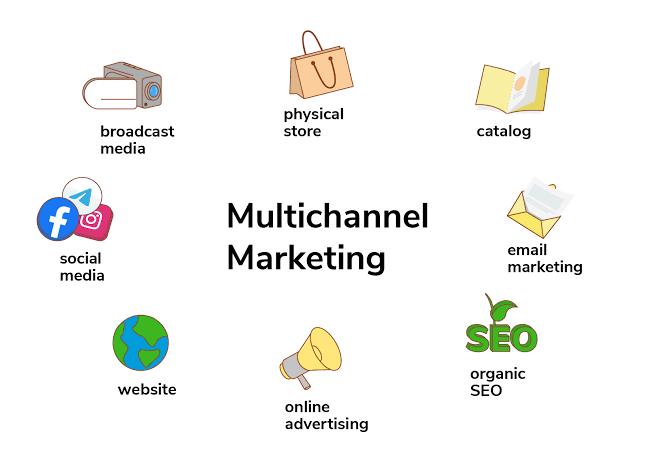
Why Multi-Channel Marketing is Essential
Increased Reach: Multi-channel marketing allows brands to tap into diverse demographics through different platforms. Whether it’s LinkedIn professionals, Instagram visual learners, or email subscribers, each channel caters to unique audiences, expanding the reach beyond the limitations of a single platform.
Enhanced Engagement: People interact differently across channels. Some prefer the detailed insights of email newsletters, while others engage more actively on social media or YouTube. By utilizing multiple channels, businesses can capture attention where it’s most likely to convert, boosting engagement and interaction rates.
Improved Lead Generation: Each channel offers distinct opportunities for lead capture. Strong CTAs on landing pages, personalized emails, or interactive content on social media can each contribute to lead generation, creating a comprehensive funnel that captures interested prospects at various stages.
Complements Other Strategies: Multi-channel efforts complement strategies like SEO and content marketing. Consistent messaging across these channels reinforces brand identity and ensures that customers encounter the same value proposition wherever they engage.
Best Practices for Effective Multi-Channel Marketing
Integrated Messaging: Ensure that messaging across all channels is consistent, whether it’s through email, social media, or blog posts. This consistency builds trust and recognition, making the brand more relatable to the audience.
Personalization: Tailor content to individual preferences and behaviors. For example, segment email lists based on purchase history or browsing habits to deliver hyper-relevant content, increasing the likelihood of engagement and conversion.
Continuous Monitoring and Adjustment: Regularly analyze performance metrics using tools like Google Analytics or HubSpot. A/B testing different ad creatives or email subject lines helps refine strategies, optimizing each channel’s effectiveness over time.
Tools and Technology: Leverage tools that streamline cross-channel efforts, such as marketing automation software. These platforms enable efficient management of campaigns, segmentation, and analytics, ensuring that efforts remain coordinated and impactful.
Challenges to Overcome
Coordination Across Channels: Managing multiple channels requires careful orchestration to avoid conflicting messages or overlapping campaigns. This demands collaboration among teams and perhaps the use of project management tools.
Avoiding Message Overlap: Ensuring that messages don’t become redundant across channels is crucial. Overlapping messages can dilute brand impact, so each channel should highlight unique aspects of the product or service.
Cost Efficiency: Allocating resources effectively across channels can be challenging. Marketers must weigh the cost of each channel against its potential returns, possibly starting with lower-cost channels before scaling up.
Integration with Overall Digital Marketing Strategy
A successful multi-channel approach is integral to the broader digital marketing strategy. It shouldn’t operate in isolation but rather complement tactics like audience segmentation and content creation. By aligning multi-channel efforts with strategic goals, businesses can craft campaigns that seamlessly guide prospects through the customer journey, from awareness to conversion.
Seamless Campaign Alignment: Ensure that all channels work in tandem, supporting each other to amplify impact. For instance, a social media campaign can drive traffic to a landing page, which then captures leads via an email follow-up.
Diverse Touchpoints: Engage customers through various touchpoints, from blogs and videos to webinars and podcasts. Each touchpoint provides an opportunity to reinforce brand messaging and build relationships.
Aligned Messaging: Maintain consistent messaging across all channels to prevent confusion and ensure that each touchpoint reinforces the brand’s value proposition.
Targeted Outreach: Use data to identify the most promising segments within each channel, ensuring that efforts are focused and impactful. This targeted approach maximizes ROI by reaching the most relevant audiences.
Leverage Data for Insights: Collect and analyze data from each channel to identify trends and optimize future campaigns. Tools like Google Analytics and CRM systems provide valuable insights into campaign performance and audience behavior.
Drive Optimal Outcomes: By continuously refining strategies based on performance data, businesses can enhance campaign effectiveness, leading to better outcomes in terms of lead generation, brand awareness, and customer retention.
In conclusion, a well-executed multi-channel marketing approach is a powerful tool for driving leads and achieving digital marketing goals. By integrating diverse channels, maintaining consistent messaging, and leveraging data, businesses can create a cohesive strategy that resonates with their audience, fosters engagement, and ultimately delivers measurable results. Embracing a multi-channel effort ensures that no opportunity is missed, and every touchpoint contributes to building a strong, recognizable brand.
conclusion
Successful digital marketing isn’t about isolated tactics—it’s about creating a cohesive, data-driven strategy that guides potential customers from awareness to conversion. Whether through SEO, social proof, audience segmentation, multi-channel marketing, or automation, each element plays a crucial role in attracting, engaging, and converting leads.
The key to long-term success is integration—aligning your marketing efforts across multiple channels, leveraging automation for efficiency, and continuously analyzing performance data to refine your approach. By combining strategic content, personalized engagement, and smart technology, businesses can maximize reach, build trust, and drive sustainable growth.
In the ever-evolving digital landscape, adaptability is everything. Stay agile, track your results, and keep optimizing—because the brands that listen, innovate, and deliver real value will always stand out